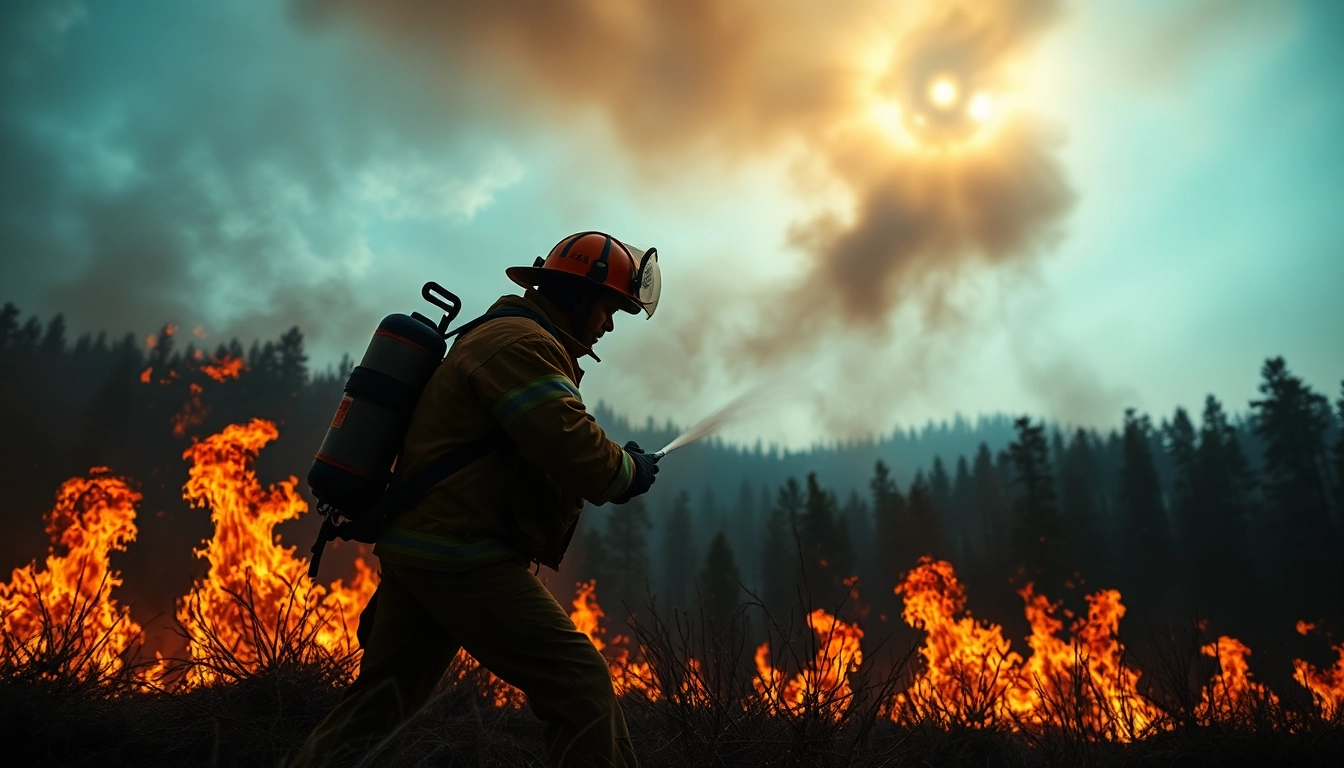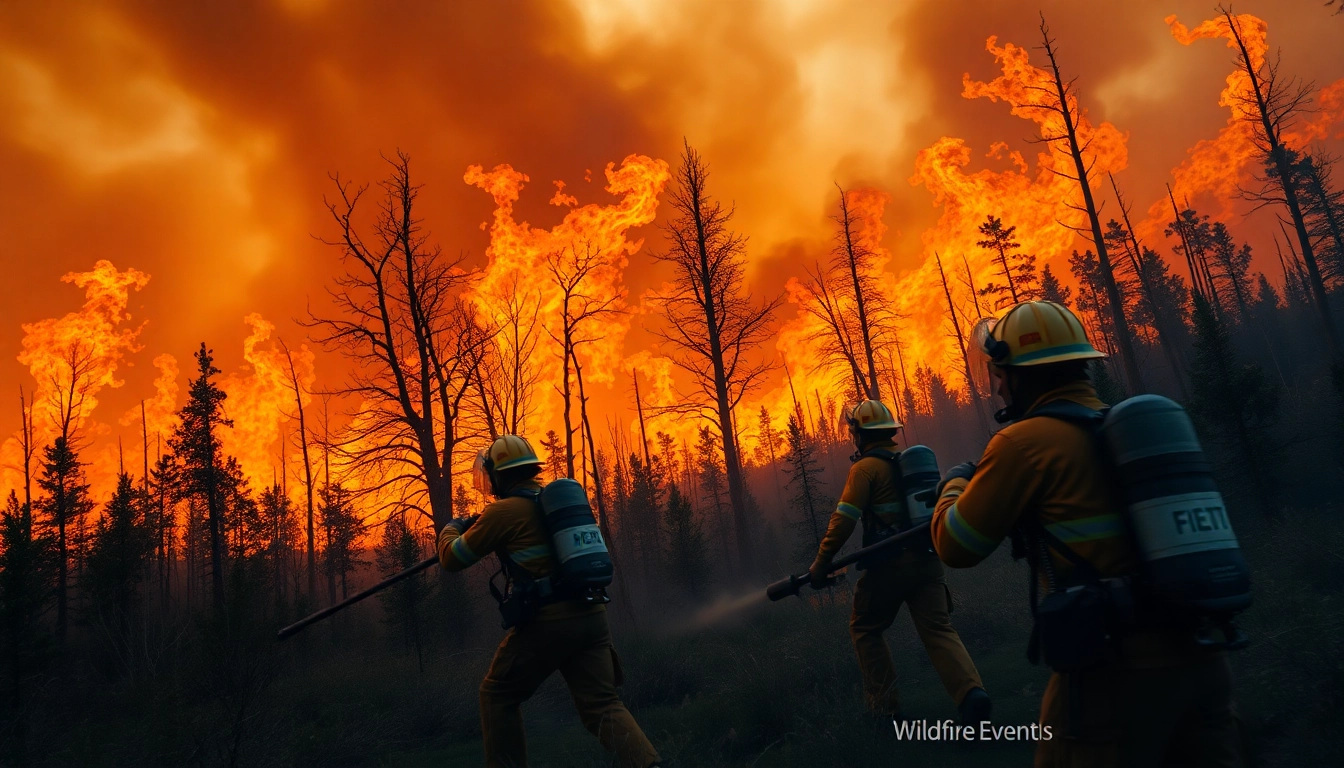1. Introduction to Wildfire Events
Wildfire events have become a significant concern for communities across the globe, influencing landscapes, ecosystems, and human health. These destructive phenomena are not merely accidents of nature; they stem from a complex interplay of environmental, climatic, and human factors. Understanding wildfire events is crucial for enhancing preparedness and resilience in the face of increasing frequency and intensity of these fires. The wildfire events of the recent years have called for heightened awareness and response strategies.
1.1 Definition and Characteristics of Wildfire Events
Wildfires, also known as bushfires or forest fires, refer to uncontrolled fires occurring in wildland areas. These fires can vary widely in size, intensity, and causes:
- Size: From small, contained burns to massive infernos covering thousands of acres.
- Intensity: The heat and energy released during a wildfire can range from low to extreme, affecting how quickly the fire spreads.
- Duration: Some wildfires burn for a few hours, while others can persist for weeks or even months.
Wildfire events typically have three distinct phases: the growth phase (where they spread rapidly), the fully developed phase (which can engulf large areas), and the decay phase (where containment efforts take place).
1.2 Causes and Contributing Factors of Wildfire Events
The causes of wildfire events can generally be categorized into natural and human-induced factors:
- Natural Causes: Lightning strikes are one of the most significant natural causes. Drought conditions can dry out vegetation, making it more susceptible to ignition.
- Human Factors: Accidental ignitions from campfires, discarded cigarettes, or sparking power lines account for a considerable percentage of wildfires. Additionally, land management practices can influence fire risk.
Contributing factors such as climate change, increased temperatures, and prolonged dry seasons often exacerbate the conditions favorable for wildfires.
1.3 Importance of Studying Wildfire Events
Understanding wildfire events is crucial for several reasons:
- Risk Management: Analyzing past wildfire events provides insights into emerging patterns and potential future risks.
- Environmental Impact: Studying wildfires helps assess their impact on ecosystems and biodiversity, including both immediate and long-term consequences.
- Public Safety: Enhanced knowledge contributes to the development of safety guidelines, preparedness plans, and effective mitigation strategies.
2. Wildfire Events and Climate Change
2.1 Link Between Climate Change and Wildfire Events
Scientific studies increasingly demonstrate a strong correlation between climate change and the rise in wildfire events. Key factors include:
- Higher Temperatures: Rising global temperatures contribute to increased rates of evaporation, resulting in dryer vegetation, which serves as fire fuel.
- Altered Precipitation Patterns: Changes in rainfall can lead to periods of intense drought, and subsequently, regions that are usually humid become more fire-prone.
2.2 Historical Trends in Wildfire Events
Data analysis reveals that the incidence and severity of wildfire events have escalated over the past decades. In regions such as the western United States, recent years have witnessed unprecedented wildfire activity, driven by climbing temperatures and changing land-use practices.
Historically, fire regimes have varied, with certain ecosystems developing adapted strategies for managing fires. However, recent trends suggest a shift toward more devastating and uncharacteristic fire events.
2.3 Future Implications of Climate Change on Wildfire Events
The future of wildfire events appears grim if climate change continues unabated. Some predicted implications are:
- Increased Frequency: Wildfires are expected to occur more frequently due to prolonged heat and dryness.
- Longer Fire Seasons: The temporal window during which fires are likely to ignite and spread may expand significantly.
- Wider Range: Regions that have previously been low-risk for wildfires may experience an uptick in fire activity.
3. Managing and Mitigating Wildfire Events
3.1 Effective Fire Prevention Strategies
Preventing wildfire events involves a multi-faceted approach, including:
- Forest Management: Implementing controlled burns and thinning dense tree populations can help reduce available fuel.
- Community Education: Educating residents about fire risks and safe practices significantly lowers the chance of human-induced ignitions.
- Building Codes: Enforcing stricter building codes that promote fire-resistant materials in wildfire-prone areas can enhance safety.
3.2 Role of Community Preparedness in Wildfire Events
Community engagement and preparedness are critical for reducing risks associated with wildfire events:
- Preparedness Plans: Communities must have comprehensive wildfire preparedness plans that include evacuation routes and emergency contact systems.
- Community Training: Organizing training sessions empowers community members to act decisively during a wildfire event, whether through evacuation or fire suppression efforts.
3.3 Technology and Innovations in Wildfire Management
Technological advancements play a vital role in managing wildfire events efficiently:
- Remote Sensing: Satellite imagery and aerial drone surveillance provide real-time data on fire spread and intensity, enabling more effective resource allocation.
- Predictive Modeling: Advanced algorithms utilizing weather patterns and fuel conditions help predict potential fire outbreaks, informing proactive strategies.
4. The Human and Ecological Impact of Wildfire Events
4.1 Health Risks Associated with Wildfire Events
Wildfire events pose significant health risks to populations, including:
- Air Quality Deterioration: Smoke from wildfires releases harmful particulates and gases, leading to respiratory issues for vulnerable groups.
- Mental Health Challenges: The psychological impact of evacuation and loss during wildfires can lead to long-term mental health issues, such as PTSD.
4.2 Economic Consequences of Wildfire Events
The economic ramifications of severe wildfire events can be staggering:
- Property Damage: Homes, businesses, and infrastructure can incur severe damage or total loss, leading to expensive rebuilding efforts.
- Insurance Costs: Increased wildfire events result in heightened insurance premiums and financial burdens on local economies.
4.3 Ecological Restoration Post-Wildfire Events
Post-wildfire ecological restoration is crucial for returning ecosystems to their original state:
- Soil Stabilization: Post-fire landscapes often suffer from soil erosion; restoration efforts should focus on stabilizing soils to prevent further degradation.
- Native Species Reintroduction: Ensuring that native plant species return helps regain ecosystem balance and supports wildlife.
5. Looking Ahead: The Future of Wildfire Events
5.1 Predictive Modeling for Wildfire Events
The evolution of predictive modeling will shape wildfire management strategies in the future. By integrating climate data, land use patterns, and historical fire behavior, models will enable more accurate forecasting of wildfire events:
- Enhanced Accuracy: Improved models reduce uncertainty, allowing for timely responses to emerging threats.
- Resource Allocation: Predictive insights enable better planning for fire suppression resources and personnel deployment.
5.2 Policy Changes Impacting Wildfire Management
Pivotal policy changes are essential in addressing the wildfire crisis effectively:
- Funding for Fire Prevention: Increased federal and state funding for wildfire prevention initiatives is crucial for supporting local efforts.
- Land Management Policies: Reforming land management practices to prioritize fire resilience will be necessary for long-term sustainability.
5.3 The Role of Community Action in Reducing Wildfire Events
Community action is vital in mitigating the impacts of wildfire events:
- Volunteer Firefighting Efforts: Local volunteer firefighting programs enhance community readiness and resource mobilization.
- Community Resilience Groups: Forming dedicated groups focused on resilience planning and fire preparedness fosters a proactive community culture.



